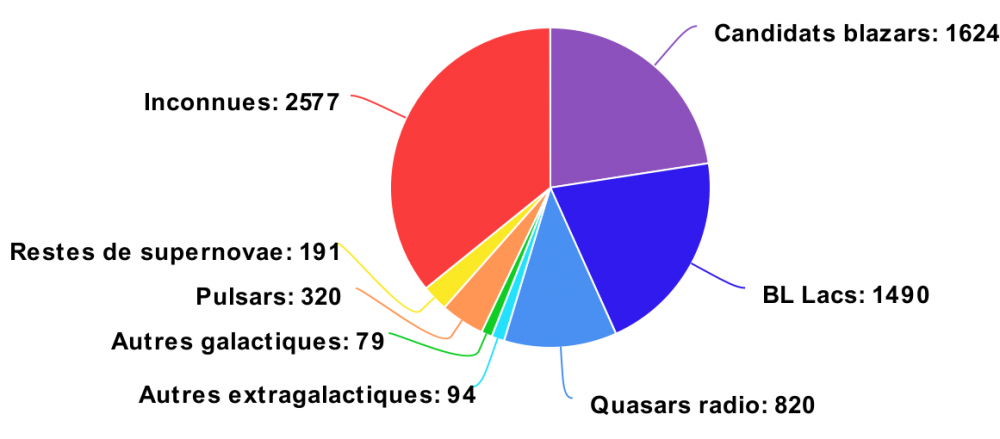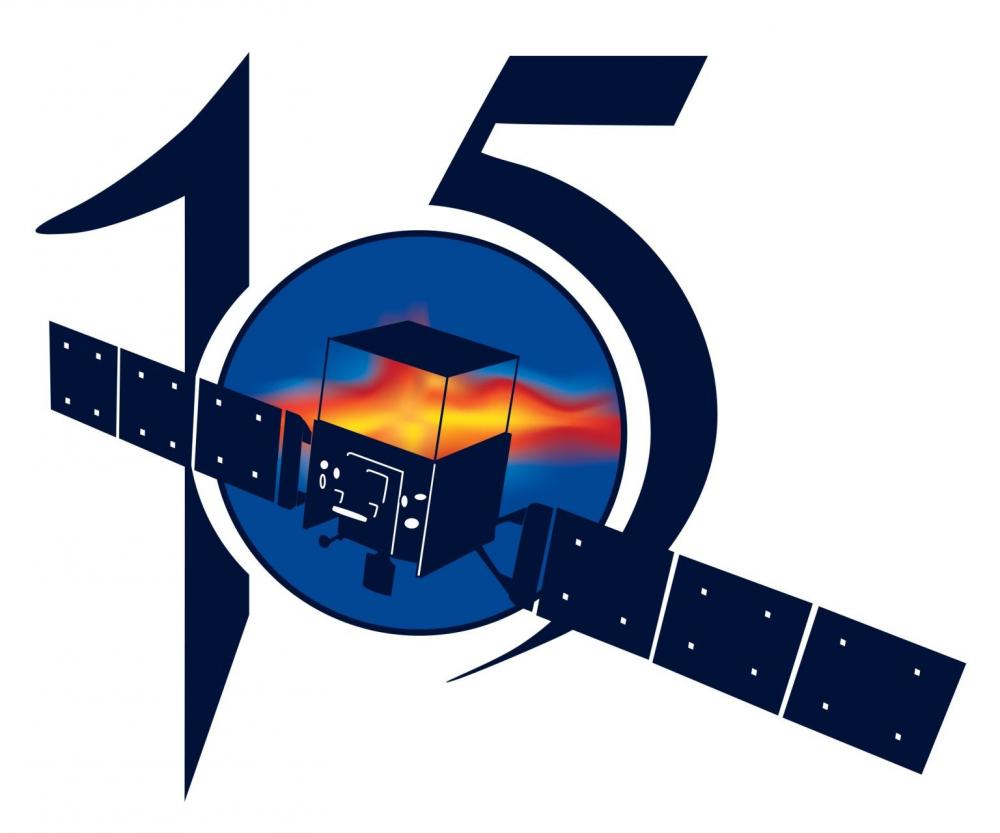Fermi-LAT telescope continues systematic γ-ray survey
NASA's Fermi satellite was launched in June 2008, and the Fermi-LAT telescope has been carrying out a systematic γ-ray survey of near-GeV energies covering most of the sky every 3 hours (and the whole sky in no more than a week) since August 2008.
The Fermi-LAT gamma catalog
The fourth Fermi-LAT source catalog, called 4FGL, was published in 2020 on the basis of 8 years of observations, then revised after 10 and 12 years. It is now based on 14 years of data. This catalog, accessible on NASA's Fermi website, contains around 7,000 sources and serves as a reference for all gamma-ray astronomy, in particular for ground-based Cherenkov telescopes. Longer periods of observation enable us to detect more sources, both less luminous and new, as many of them are highly variable, particularly the active nuclei of galaxies (see video below). This catalog is coordinated at DAp, which also provides spectral analysis and variability for all sources.
A view of the gamma-ray sky in which variability is highly accelerated (1 month per second). The randomly flashing dots are mostly blazars. The Sun can be seen passing through the sky (top to bottom). The bluish background is the emission due to the irradiation of interstellar gas by cosmic rays from our Galaxy.

Figure 1: Classification of Fermi-LAT sources. BL Lacs and radio quasars are two types of blazar (supermassive black hole whose jet points towards us). Supernova remnants also contain pulsar nebulae (maintained by the central pulsar). Around a third of the sources (mostly faint ones) remain unknown.
Sources identified over the past 15 years
Figure 1 shows the various sources of this γ-radiation, which are jointly used to better understand the acceleration of ultra-relativistic particles (protons, electrons) and their propagation in the Universe. Researchers understand the broad outlines of these phenomena, but many aspects remain to be clarified.
DAp's scientific contributions
Apart from the catalog, the DAp is also at the forefront of the study of diffuse γ emission from our Galaxy. Knowledge of the interstellar medium makes it possible to deduce the distribution of cosmic rays in the Galaxy, and to study how they propagate within it. But conversely, γ observations can point to gaps in conventional observations of interstellar gas (spectral lines of CO or HI), leading to the discovery and study of "dark" gas. In addition to these two main activities, DAp researchers are also involved in pulsar research (see video below) and the remnants of supernova explosions, thought to be the site of cosmic ray acceleration in our Galaxy.
Clignotement des pulsars ralenti d’un facteur 5. Les pulsars gamma sont en jaune et les pulsars radio en blanc. Le ciel est balayé en partant du centre Galactique. On reconnaît le pulsar de Vela (le plus brillant du ciel) et un peu plus tard le pulsar du Crabe (moins brillant mais plus rapide). Les points sont d’autant plus gros que le pulsar est brillant. Le fond est le même.
Recent references:
- Catalog of 4FGL-DR3 sources, Abdollahi et al 2022
- Kepler supernova afterglow, Acero et al 2022
- High-latitude diffuse gas, Casandjian et al 2022
- Link to Fermi DAp website
Collaboration : Fermi-LAT (USA, Italy, France, Japan, Sweden)
Financial support: CNES
Contacts: Jean Ballet, Isabelle Grenier (CEA/DRF/IRFU/DAp)
• Structure and evolution of the Universe › High energy cosmic phenomena and astroparticles Thèmes de recherche du Service d'astrophysique › Astrophysique-SAp
• Institute of Research into the Fundamental Laws of the Universe • The Astrophysics Division (DAp)
• High Energy Cosmic Phenomena Research Laboratory • Science and space instrument interface laboratory

